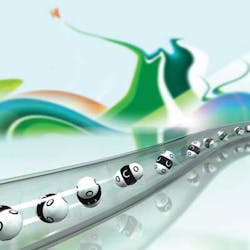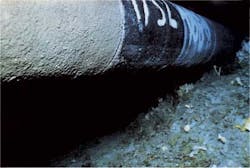Offshore industry examines integrity of CO2 pipelines
Jock Brown
Sigbjørn Røneid
Mohammad Ahmad
Angunn Engebø
DNV GL – Oil and Gas
With energy security and climate change at the top of the global agenda, climate change mitigation technologies such as carbon capture, utilization and storage (CCUS) are gaining momentum. The number of offshore CO2 pipelines is therefore expected to grow significantly in the future.
CCUS technology offers a solution for both supporting production of incremental hydrocarbon reserves from existing fields while at the same time storing CO2 away from the atmosphere, avoiding climate impacts. As fossil-based fuels continue to be part of the energy mix in the foreseeable future, CCUS will be critical, particularly for reducing emissions from coal-fired power plants. The push to unlock high CO2 stranded gas fields is also likely to spur the development of CO2 pipeline technology offshore.
In Europe, Brazil and Southeast Asia, the most advanced CO2 storage sites are offshore. The demand for such facilities is driving the need for reliable transportation pipelines from onshore sources to offshore storage sites. The public acceptance issue for onshore storage is another driver for the offshore storage business. As well as the clear advantage to the environment, the injection of CO2 in offshore oil and gas reservoirs could extend the lifetime of the well through enhanced oil recovery (EOR).
Opportunities for the offshore storage of CO2 are prevalent in the North Sea with projects underway off the UK and Norway. There are also opportunities in offshore Brazil and China. Regarding sour gas developments and the trend of increasing use of LNG in Southeast Asia, there is an expectation that more of these "stranded" gas fields will be developed.
Transferrable technology
Transportation of CO2 is generally considered the easier part of CCUS, since the pipeline sector is well established and the technology is well known. However, closing existing knowledge gaps associated with the flow dynamics and assurance of CO2 pipeline transport has the potential to reduce uncertainty and avoid unnecessary high safety margins.
The technology for conveying CO2 is typically the same as that for any other gas and liquid pipelines offshore. From the outside, it would be difficult to tell the difference between a CO2 pipeline and a natural gas pipeline. The key differences can be found on the inside.
The thermodynamic and corrosive properties of pure CO2 are different from those of other fluids, such as natural gas, conveyed in pipelines. The presence of impurities in the CO2 stream, like those from anthropogenic sources, adds another level of complexity. Understanding how CO2 disperses into the atmosphere during planned, as well as accidental release scenarios is essential for pipeline route planning and risk assessment of pipeline design. This understanding can be used to demonstrate the effect on pipeline design and is essential to construct cost-effective and safe offshore CO2 pipeline solutions.
Research around the world is building on enhancing the understanding of the science and fundamental properties of CO2, in particular the thermodynamic and corrosive properties. The main body of work currently being undertaken builds on the experiences of operating pipelines carrying pure natural CO2 for the EOR industry in North America.
Displaying 1/2 Page 1,2Next>
View Article as Single page


